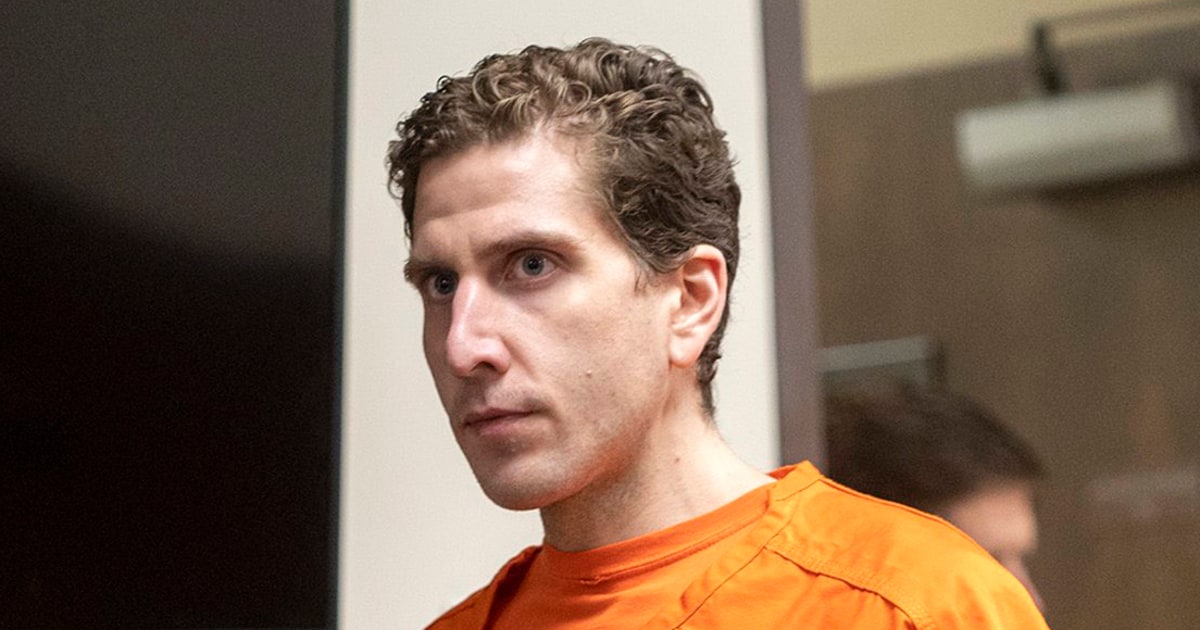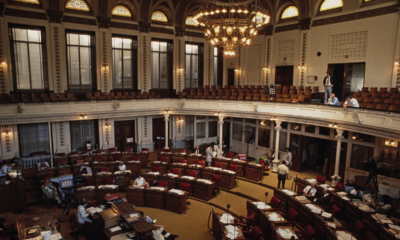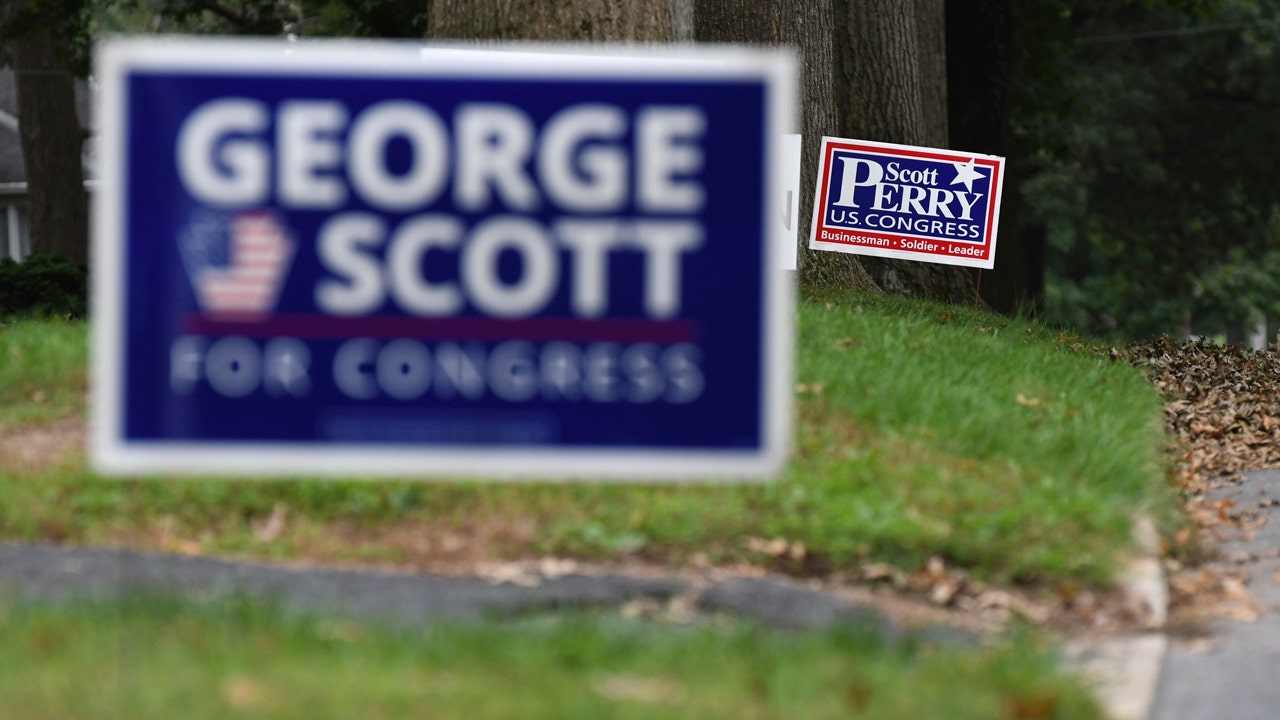Idaho
Opinion | Bryan Kohberger’s lawyers just made a very significant decision

Bryan Kohberger, the man accused of killing four Idaho college students, appeared in court Monday as part of what will certainly be one of the highest-profile murder trials this year. Kohberger “stood silent,” leading the assigned judge to enter default not guilty pleas on all murder charges against him. He also declined to waive his speedy trial rights, and Latah County District Judge John Judge scheduled an October trial date. This last decision might quietly give Kohberger one of his most significant advantages in a case that otherwise seems to be getting worse for him as time goes on.
There was a lot of attention given to Kohberger’s decision to stand silent.
There was a lot of attention given to Kohberger’s decision to stand silent. To an uninformed outsider, it might seem strange, adding to the drama of an already mysterious case. But from a legal perspective, the more consequential choice was Kohberger’s demand for a speedy trial. This constitutionally guaranteed right gives us some clues about the defendant’s defense strategy. It also signals what his lawyers — and Kohberger himself — think about the state’s case.
Procedurally, when defendants in Idaho choose not to say anything at their arraignment, the judge will automatically enter a “not guilty” plea on their behalf. Last year, Lori Vallow, an eastern Idaho mother accused of murdering two of her children, stood silent and the court entered a plea of not guilty on her behalf, as well. It’s not that uncommon. (Vallow was just found guilty on all charges and will spend the rest of her life in prison.)
But why would a defendant even bother with a symbolic gesture that makes no substantive difference in the case? Because while symbolic gestures may not mean much to the court or the prosecutor, these little moments can mean a lot to people locked up 23 hours a day, with nothing else to think about. In a high-profile case like this one, Kohberger knows that every word and gesture from him will be newsworthy. So, perhaps he’s refusing to acknowledge the authority of the court. Maybe he’s just messing with us. Incarcerated defendants can hyperfocus on these kinds of details. Now we’re hyperfocusing on it too. And it’s not the most important thing that happened at the arraignment.
Far more important than Kohberger’s silent plea was his defense team’s refusal to waive their client’s “speedy trial” rights. The Sixth Amendment to the U.S. Constitution, along with Article I, Section 13 of the Idaho Constitution, guarantee a criminal defendant the right to a speedy trial. The Idaho Legislature has established specific time limits within which a criminal defendant must be brought to trial.
The law provides that “unless good cause to the contrary is shown,” the trial court must dismiss the case if an indicted defendant is not brought to trial within six months of the arraignment date. It’s not a hard deadline; the “good cause” exception gives the state a lot of leeway. For example, if the defendant requests a continuance of a court date, or otherwise delays his own case, that time won’t be counted against prosecutors. (On the other hand, if the state delays the case to accommodate a victim’s schedule, that may not be considered “good cause.” Neither would be a delay caused by a trial court’s overcrowded calendar.) The court’s failings could conceivably lead to a dismissal, even if the prosecution was not at fault.
If the facts or issues are complex, then defendants should consider waiving their speedy trial rights in order to digest terabytes of discovery and prepare their own defense.
There are also some situations in which defendants should waive their speedy trial rights. For example, in many federal criminal cases, the Justice Department has investigated a defendant for months or years before seeking an indictment. The government has amassed phone records, bank records, emails and text messages. Federal prosecutors are often pretty much ready to go to trial by the time they present to the grand jury — before defendants even know they are about to become defendants. If the facts or issues are complex, then defendants should consider waiving their speedy trial rights in order to digest terabytes of discovery and prepare their own defense. In those cases, the prosecution doesn’t need the extra time; the defense does.
Murder cases, on the other hand, are reactions to a crime already committed. They are not investigated months before the crime happens. The criminal has the head start, not the police.
Kohberger’s team asked for a trial date at the outer limits of the six-month deadline. They are sending a message to the prosecution: put up or shut up. It’s the right call. By all indications, the state is still collecting evidence against Kohberger, and the investigation is already stretching financial resources. And the defense is hoping that the prosecution won’t be ready for trial in six months.
Of course, the timeline impacts both sides. A short turnaround also means that the defense has even less time to prepare for trial. But that’s not a big deal if the defense strategy is primarily to focus on the weakness of the state’s case, and the failures of the investigation. And it seems like that’s exactly what the defense is going to do here.
Unless Kohberger and his lawyer somehow develop an “alternate killer” theory, they are probably planning to just paint law enforcement’s case as shoddy and hurried. They will accuse the police of “tunnel vision” — focusing on the defendant early on, to the exclusion of other viable suspects.
The defense doesn’t need extra time to prepare that trial strategy. But the state in this case could really use the extra time. And Kohberger’s defense team knows it. The speedy trial decision Monday could end up being the most significant defense strategy in this case.

Idaho
College of Idaho to host candidate forum with District 9, 11 legislative candidates on May 15 • Idaho Capital Sun

The College of Idaho is hosting a free candidate forum that is open to the public on May 15.
With one week before the primary election, the event will include two panel discussions with legislative candidates running for office in Districts 9 and 11. District 9 includes Payette, Washington counties and a part of Canyon County, and District 11 includes Caldwell and other parts of Canyon County.
One congressional candidate, Kaylee Peterson, will also be a part of the panel discussions. Peterson is a Democrat running for U.S. House Idaho District 1, which is held by U.S. Rep. Russ Fulcher, R-Idaho.
Candidates will respond to questions about their positions on a variety of issues, including public school facilities, abortion, library policies, Joint Finance-Appropriations Committee budgeting process, among other topics, according to a press release from the college. Mckay Cunningham, the college’s on-campus experiential learning director, will monitor the event.
When: 4 p.m. to 6 p.m. Wednesday, May 15
Where: College of Idaho’s Langroise Recital Hall in Caldwell
The first panel will include District 9 and 11 candidates including:
- Idaho Senate candidate Toni Ferro, D-Caldwell
- Idaho House candidate Anthony Porto, D-Caldwell
- Idaho House candidate, Rep. Julie Yamamoto, R-Caldwell
- Idaho House candidate John Shirts, R-Weiser
The second panel will include:
- Idaho Senate candidate Rachel Buck, D-New Plymouth
- Idaho Senate candidate Brandon Shippy, R-New Plymouth
- Idaho Senate candidate Scott Syme, R-Wilder
- U.S. House Democratic candidate Kaylee Peterson
Food and drinks will be provided after the event.
GET THE MORNING HEADLINES DELIVERED TO YOUR INBOX
Idaho
Solar storm power outages unlikely in Idaho Falls – Local News 8

IDAHO FALLS (KIFI) – The City of Idaho Falls says there is a small but unlikely chance of power outages from Friday night’s massive solar storm.
Instead of rain or snow, the Earth will be hit with the largest burst of electromagnetism since 2005. The storm is expected to last throughout the weekend. While the term “solar storm” sounds scary, officials said it shouldn’t spark any panic.
Solar storms happen all the time, according to the NOAA. That’s why City of Idaho Falls (and Idaho Falls Power) spokesperson Eric Grossarth isn’t fazed.
“Talking with our staff, it’s not something that’s been a real major concern in the past,” he said.
Minor solar systems get absorbed by the Earth’s magnetic field, but larger ones can push through.
“It’d send a high amount of energy, higher than what a power line or a piece of equipment on that power line is designed to handle,” Grossarth explained. “That’s one of those things that you can only prepare for so much.”
Local News 8 asked if any other hazards create a similar effect on the power grid.
“A good example would be in your house, if you had lightning strike your house and a large amount of energy going through those lines,” Grossarth said. “It can trip breakers and things like that.”
Friday night’s solar storm prompted the U.S. government to issue its first severe geomagnetic storm watch in nearly 20 years. On a scale of G1 to G5, G5 being most severe, the storm has been categorized as a G4.
However, Grossarth said a G4 solar storm still isn’t much cause for concern.
“I’ll be honest – I think a bigger threat to power would be squirrels,” he said candidly.
The storm is much more likely to affect radio and GPS signals, Grossarth added. Even if it overloads the grid, he said the city is ready for it.
“It’s just repairing equipment,” Grossarth said. “So if it blows a transformer, pops a switch, it’s just going and replacing or fixing that equipment. It’s just like any other outage.”
Solar storms do have upsides, though. Areas in Idaho without much light pollution should be able to view the Aurora Borealis, also known as the Northern Lights, this weekend.
Idaho
Idaho State Society, Daughters of the American Revolution Teams Up with the Elizabeth Dole Foundation to Identify, Support, and Connect with Military Caregivers in Idaho

BOISE, Idaho (KMVT/KSVT) — In celebration of May as Military Caregivers Month in Idaho, the Idaho State Society, Daughters of the American Revolution (ISSDAR) chapters, together with the Elizabeth Dole Foundation’s Hidden Heroes Cities & Counties initiative, announce today they have secured the 50th proclamation from an Idaho city or county, in support of military caregivers. This campaign, which began in February, educates Idahoans, county, and city governments about the challenges and struggles of Idaho’s military caregivers. Further supporting education and outreach, the Idaho DAR organization created a website, hiddenheroesidaho.org, as a resource for all Idahoans to learn more about military caregivers and how non-caregivers can provide critical support. The website also helps Idahoans identify themselves as caregivers, locate local and national resources available to assist them, and connect them with supportive government contacts and a national network of caregivers.
Governor Brad Little, who issued a proclamation declaring May 10, 2024, as Daughters of the American Revolution Day in Idaho, noted, “Idaho’s military caregivers provide critical services for our veterans, often without recognition or support. I am pleased to see that our county and city governments are joining forces with the State of Idaho, the Elizabeth Dole Foundation, and Idaho’s Daughters of the American Revolution to educate all Idahoans on what it means to be a military caregiver and the resources available to support their selfless work.”
Janice Beller, Idaho State DAR Regent, is proud to bring this message to Idaho’s communities, large and small. “We have been overwhelmed in the number of cities and counties who immediately committed this important initiative,” she said. “The first DAR members were also some of the first military caregivers in America, so our service now honors this cherished legacy.”
“Idaho is setting an example for the nation. They are stepping up to show what it means to support military and veteran caregivers. It is thanks to the work of our Dole Caregiver Fellows, like Linzi Andersen, and strong partnerships with local government that we are able to create such an impact for our community,” said Steve Schwab, CEO of the Elizabeth Dole Foundation.
About Daughters of the American Revolution
The National Society Daughters of the American Revolution (DAR) is a women’s service organization whose members can trace their lineage to an individual who contributed to securing American independence during the Revolutionary War. Today’s DAR is dynamic and diverse, with over 185,000 members in 3,000 chapters in the United States and abroad. DAR members annually provide millions of hours of volunteer service to their local communities across the country and world. DAR chapters participate in projects to promote historic preservation, education, and patriotism. Over one million members have joined the organization since its founding in 1890. In Idaho, DAR has almost 900 members in 15 chapters in every corner of the State. The current State Regent, Janice Beller, selected Hidden Heroes as an area of focus and service during her two-year term, 2023-2025.
About Elizabeth Dole Foundation
The Elizabeth Dole Foundation is the preeminent organization empowering, supporting, and honoring our nation’s 5.5 million military caregivers — the spouses, parents, family members, and friends — who care for America’s wounded, ill or injured service members and veterans at home. Founded by Dole in 2012, the Foundation adopts a comprehensive approach in its support and advocacy, working with leaders in the public, private, nonprofit and faith communities to recognize military caregivers’ service and promote their well-being. e Foundation’s Hidden Heroes program brings vital attention to the untold stories of military caregivers and provides a network for military caregivers to connect with their peers and access resources. Visit www.ElizabethDoleFoundation.org for more information.
Copyright 2024 KMVT. All rights reserved.
-

 Politics1 week ago
Politics1 week agoThe White House has a new curator. Donna Hayashi Smith is the first Asian American to hold the post
-

 News1 week ago
News1 week agoPolice enter UCLA anti-war encampment; Arizona repeals Civil War-era abortion ban
-

 Politics1 week ago
Politics1 week agoAdams, NYPD cite 'global' effort to 'radicalize young people' after 300 arrested at Columbia, CUNY
-

 World1 week ago
World1 week agoTurkish police arrest hundreds at Istanbul May Day protests
-
)
) Movie Reviews1 week ago
Movie Reviews1 week agoThe Idea of You Movie Review: Anne Hathaway’s honest performance makes the film stand out in a not so formulaic rom-com
-

 News1 week ago
News1 week agoSome Republicans expected to join Arizona Democrats to pass repeal of 1864 abortion ban
-

 News1 week ago
News1 week agoSome Florida boaters seen on video dumping trash into ocean have been identified, officials say
-

 World1 week ago
World1 week agoIn the upcoming European elections, peace and security matter the most




















